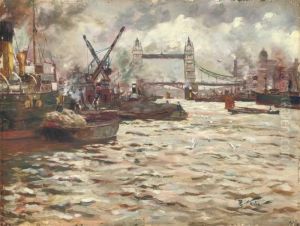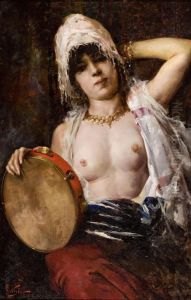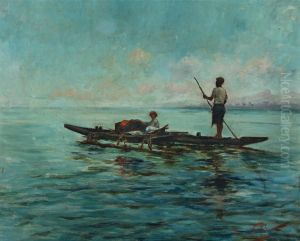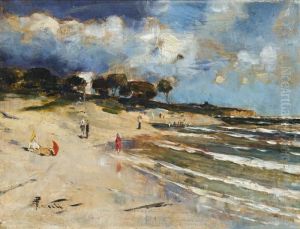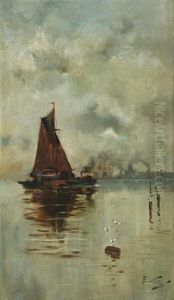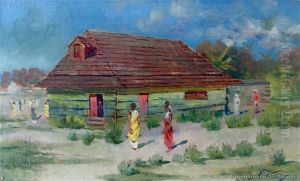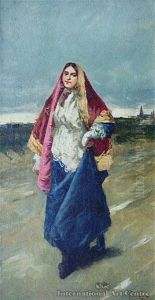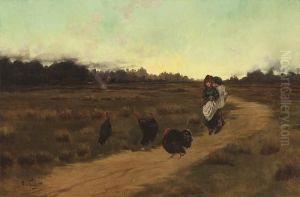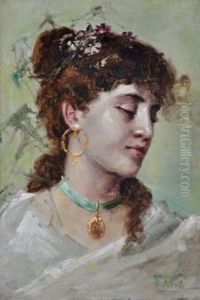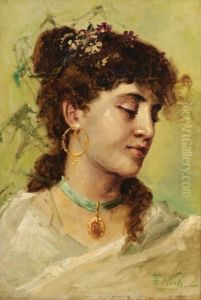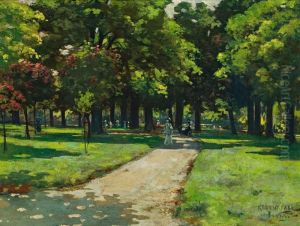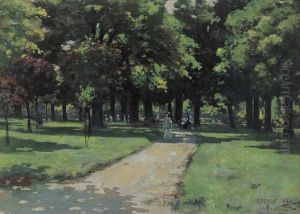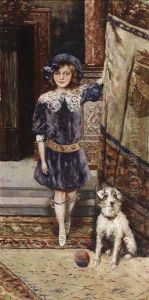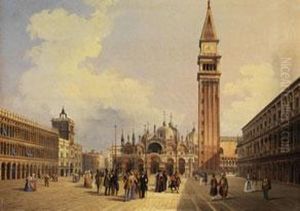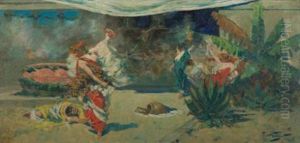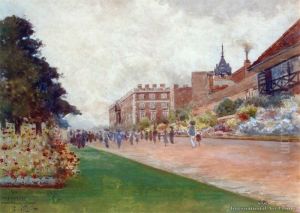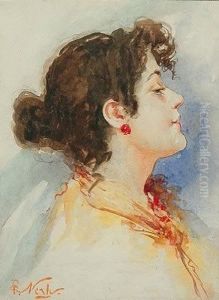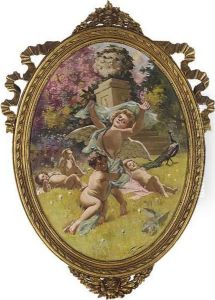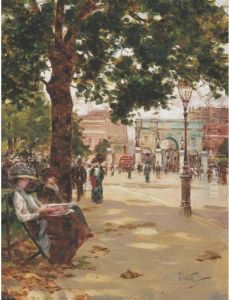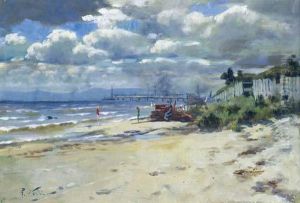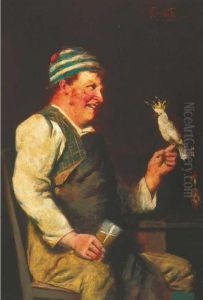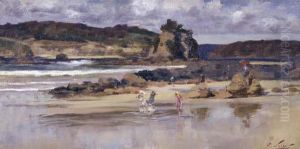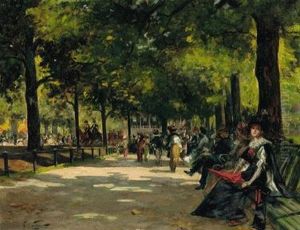Girolamo Pieri B. Nerli Paintings
Girolamo Pieri Ballati Nerli, known as Girolamo Pieri Nerli, was an Italian painter who lived and worked during the late 19th and early 20th centuries. Born on December 24, 1860, in Siena, Italy, Nerli was part of the post-Macchiaioli movement, which followed the Macchiaioli group known for their plein air painting techniques and focus on light and color.
Nerli's early education in art began in Florence, where he was influenced by the works of the Macchiaioli artists. He furthered his studies in Rome and subsequently moved around various European cities, including Paris and London, absorbing different artistic styles. His travels and exposure to various art forms, including Impressionism, influenced his painting style, which became known for its vibrant colors and dynamic brushwork.
In 1885, Nerli traveled to Australia, where he became a significant figure in the art scene, especially in Melbourne and Sydney. He taught at the Art Society of New South Wales and became associated with the famous Heidelberg School, a group of Australian Impressionist painters. Nerli's influence on Australian art was profound, particularly on artists such as Charles Conder and Tom Roberts, who adopted aspects of his fresh and direct painting method.
In 1893, Nerli moved to Dunedin, New Zealand, where he continued to work and teach, leaving a lasting impact on the development of New Zealand art. His students included Frances Hodgkins, who would become one of New Zealand's most prominent artists. Nerli's time in the Southern Hemisphere added a unique dimension to his work, as he captured the light and landscapes of the region with his European sensibilities.
Girolamo Pieri Nerli's work includes portraits, landscapes, and genre scenes. He was skilled at capturing the personalities of his sitters and the atmosphere of his environments. Despite his success abroad, he returned to Italy in the early 20th century, where he continued to paint until his death on June 24, 1926, in Florence. His legacy is preserved in the collections of various Australian and New Zealand galleries, as well as in his contributions to the international dissemination of Impressionist techniques and aesthetics.
